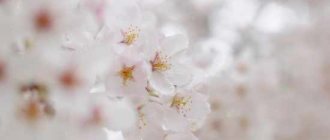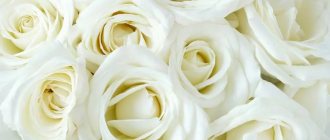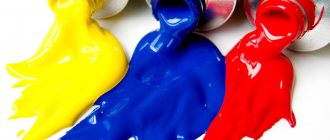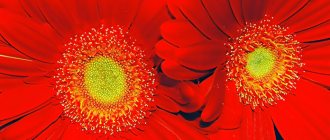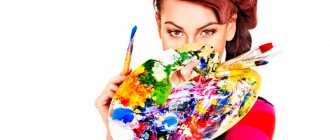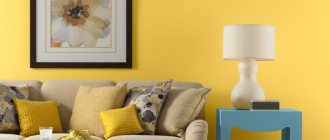In psychology, it is believed that each color influences the human psyche in some way and also has its own meaning. Seeing one of the colors, we often experience certain emotions - up to a sharp increase or decrease in mood. Also, color sometimes has a significant impact on our choices (and the creators of advertising and politics are well aware of this). In addition, various colors can be used to achieve your goals, and we recommend that you learn how to do this from the proposed article.
Rainbow psychology
As children, we all rejoiced at the appearance of a rainbow in the sky after the rain. Everyone tried to memorize the number and sequence of colors of the rainbow. Who among us does not remember such funny phrases as:
- Every
Hunter
Wants
to
Know
Where
the
Pheasant
Goes . _ _ _ _ - How
once
Jak
- Zanar
Head
broke
the
Lantern
. _ _
_ _ - And other options.
Where the first letters of the words mean the corresponding color name:
- Each
one is red; - O
hunter - orange; - Wants
- yellow; - Know
- green; - Gde
- blue; - S
goes - blue; - Azan
- purple.
But we didn’t even think at that time that each color influences us, our character and our life to one degree or another. And now, having already become adults, we can trace the psychological connection of a certain color we prefer with one or another trait of our character.
Useful tips
How to correctly apply knowledge about color psychology:
- Favorite colors are not always appropriate. Although purple may be a favorite color, a room in these shades will cause sadness and melancholy. But if we talk about the wardrobe, then you can safely buy things in these colors. Purple will create a good look together with yellow or orange shades.
- The right combination of colors is the key to success. Interior decoration, selection of festive attire, creation of a logo, decoration of the festive hall requires correct visual perception. Depending on the purpose of using colors, it is necessary to take into account their compatibility, which will not be the same in all cases.
- Functional significance of flowers. When choosing the color of clothes, a person should always be guided by external factors: weather conditions (heat, cold, rain, snow), where he is going (work, study, birthday, gym).
- The shades should help develop memory. When preparing for an exam, few people know about the mnemonic technique. If concepts, lists, pictures and tables are associated with a specific color, then they will be easier to remember.
- Maintain consistency. Choosing the right color palette can greatly influence the development of your business or upcoming event. It is important that the people around you perceive the color you display to your advantage.
The main thing is that the color attracts attention and arouses interest, and does not repel and be associated with unpleasant moments.
To finally understand the psychology of color, it’s worth watching a video with an interesting and informative lecture by a psychologist:
Red color in psychology
Since ancient times, people have shown a special interest in the color red.
In many languages, the same word means the color red and, in general, everything beautiful and beautiful. Among the Polynesians, the word "red" is synonymous with the word "beloved." In China, a sincere, frank person is said to have a “red heart,” while the heart of a bad, treacherous person is black. Red is exciting, hot, activating, associated with danger and aggression. Reds can easily attract attention to any advertisement. Your pulse and blood pressure may increase if you look at red for too long. Red tires quickly.
The meaning of red in psychology
People who prefer red love to be leaders.
Almost all their senses are at their maximum. They are persistent and do not like to put things off. It often happens that those who prefer red are demonstrative and selfish, intolerant, stubborn and cruel. A woman in red is most often inclined to flirt with guys. The color red also denotes power and greatness. In Byzantium, only the empress had the right to wear red boots. The emperor signed in purple ink and sat on a purple throne. For many peoples, the color red symbolizes the south, flame and heat.
Aggressive colors - red, red-orange.
Pink color in psychology
Pink is a soft color that dulls the emotions of anger and aggression.
In places where children with antisocial behavior are corrected, pink walls or furniture are often used. If after a hard day you come home angry and aggressive, look at something pink and your aggression will disappear. Pink can mean goodness, passion, romance, love. Those who prefer pink want to live life to the fullest, desire new experiences, are hardworking and do not like to rest. But sometimes people who prefer pink can be frivolous, childish, and love to show off in front of everyone.
The meaning of pink in psychology
Pink is the color of life, of all living things. He talks about the need to love and be kinder. Those who like him can become agitated over the most insignificant things. For people who are overly pragmatic, this color causes irritation.
Orange color in psychology
If you're in a bad mood, look for something orange.
Orange will certainly lift your mood, especially if it's winter outside. In winter, everyone enjoys orange even more than in summer, due to the lack of sun. It’s hard to imagine effective advertising without orange.
The meaning of orange in psychology
People who prefer orange are creative individuals.
They are strong, freedom-loving, and forgive everyone. They have inexhaustible energy that needs to be released, for example, by creating another masterpiece. Orange lovers may have a high opinion of themselves. Orange is the favorite color of intuitive people and passionate dreamers. In heraldry, this color also means hypocrisy and pretense.
Yellow color in psychology
Yellow is the color of gold, which since ancient times has been perceived as a frozen solar color.
This is the color of autumn, the color of ripe ears and fading leaves, but also the color of illness, death, the other world. Among many nations, women preferred yellow clothes. Often the color yellow served as a distinctive feature of noble persons and upper classes. For example, Mongolian lamas wear yellow clothes with a red belt.
On the other hand, among some Asian peoples, yellow is the color of mourning, grief, and sadness. In Europe, a yellow or yellow-black flag meant quarantine, and a yellow cross meant plague. Among the Slavic peoples, yellow is considered the color of jealousy and betrayal, and in Tibet jealousy is literally called “yellow eye.” Let us also remember the “yellow press” and the “yellow house”
The meaning of yellow in psychology
Yellow stimulates the brain and nervous system.
Yellow is joy, warmth and faith in the best. The combination of black letters on a yellow background is the most advantageous for the most effective advertising, as it contributes to better memorization of the text. But don't overdo it with yellow, as it can overstimulate the brain and cause anxiety. People who love the color yellow want to reveal themselves, to achieve the goal they have set for themselves. They are self-confident, joyful and cheerful. These people often have a high level of creativity. Yellow helps them in difficult times and concentrates their attention. Sometimes they like to gossip, or just chat, and are also often absent-minded and critical of themselves and others, but at the same time their self-esteem is not at all low, but on the contrary.
Cream and ivory
Cream and ivory are quite sophisticated colors: they have a little bit of the warmth of brown and a lot of the coolness of white. These colors are usually muted and evoke thoughts of the past. Ivory color - very calm; it is warmer than white, but also carries a sense of purity.
In design, ivory color gives the site elegance and calm. When paired with other earthy colors—like peach or brown—it can also look earthy. It can also be used to lighten dark colors - but the contrast will not be as strong as if we used white.
Examples:
The ivory background creates a warmth that is balanced by the many cool elements on the page. The natural brown colors of the page elements add warmth to the gray-cream background. If it weren't for the cream background, this site would lack elegance. The cream background reinforces the antique theme created by the graphic elements. Thanks to the ivory background and other light colors, the site looks very elegant.
The amount of information in this article may seem overwhelming to you, but the essence of color theory is precisely the sensations that different shades create. Here's a quick guide to the basic meanings of the colors above:
- Red : passion, love, anger
- Orange : energy, happiness, vitality
- Yellow : happiness, hope, deception
- Green : new beginnings, abundance, nature
- Blue : calm, responsibility, sadness
- Purple : creativity, royalty, wealth
- Black : mystery, elegance, evil
- Gray : gloominess, conservatism, formality
- White : innocence, purity, virtue
- Brown : nature, integrity, reliability
- Beige : conservatism, piety, boredom
- Cream : calm, elegance, purity
Green color in psychology
Green is a natural, calming and relaxing color.
Green has healing properties and normalizes high blood pressure. People who choose green choose their life path clearly and rationally. They approach any task in life with all seriousness. They love to help others. Their inner world is rich, but they are in no hurry to open it, even though they themselves are not secretive.
The meaning of green in psychology
Green is the color of grass and leaves.
For many peoples, it symbolizes youth, hope, fun, although sometimes it also symbolizes immaturity and lack of perfection. Green color is extremely material and has a calming effect, but it can also produce a depressing impression (it is no coincidence that melancholy is called “green”, and the person himself “turns green” with anger). The people of Iran associate the color green both with rapid growth and freshness, and with misfortune, sadness, sorrow, which is why they say “green leg” about an ill-fated person, and “green house” about a cemetery. In medieval Europe, jesters wore green and yellow clothes, and bankrupts in Germany had to wear green hats.
Our summer is winter, only painted green. Heinrich Heine
Blue color in psychology
For many peoples, the color blue symbolizes heaven and eternity.
It can also symbolize kindness, fidelity, constancy, favor, and in heraldry it denotes chastity, honesty, good reputation and fidelity. "Blue blood" speaks of noble birth; The English call a true Protestant a “blue.” In addition, the color blue is close to black and receives similar symbolic meanings. It was considered mourning in Ancient Egypt and among some peoples of South Africa. The French call horror “blue fear” (remember the fairy tale about “blue beard”. Among the Slavic peoples, blue served as the color of sadness, grief, and was associated with the demonic world. Ancient legends describe black and blue demons.
Characteristics of flowers
How to become a rich and successful person in life - the psychology of achieving success
Each color has its own psychological symbolism and a special spectrum of action on a person.
Brief description of color and its effect on the psyche
| Color | Meaning and area of influence |
| White | It symbolizes purity, simplicity, impartiality and innocence; among some peoples it is a mourning symbol. It helps Slavs get rid of negative feelings, relaxes them, promotes proper rest and getting rid of fears. Increases visual acuity, normalizes the activity of the endocrine system, promotes the removal of waste and toxins from the human body. Long-term influence of white color can lead to apathy, melancholy, and depression. |
| Black | The symbolism of this color is associated with death among many peoples. Psychology interprets it as depression, depression, destructiveness, and the desire to hide one’s thoughts from others. At the same time, this color helps a person to gather strength and show willpower, protest or concentrate on what is most important. |
| Red | Promotes the formation of leadership personality traits, improves self-esteem, and increases performance. Increases blood pressure, accelerates the metabolic process, strengthens the body's defenses. An excess of color can cause fatigue, irritability, aggression and even rage. This color is a source of authority, passion and solidity. Gives a person sensuality and instills confidence in the future. |
| Orange | Like red, it invigorates and excites the nervous system, liberates and improves mood. Promotes professional growth, increases responsibility, activates mental activity, and helps to easily establish interpersonal contacts. Regulates hormonal levels, stimulates the digestive, respiratory and endocrine systems. It relieves depression and is a symbol of nobility, joy and prosperity. |
| Yellow | This shade denotes optimism, joy, lightness and warmth. Stimulates the functioning of the intellect, promotes the development of creative abilities, has a beneficial effect on the condition of the skin, improves the process of calcium absorption, and strengthens the human skeleton. An excess of yellow color can lead to insomnia, nervous exhaustion and breakdowns. In children, this shade awakens cognitive abilities, develops self-organization and the ability to concentrate. |
| Green | It is a symbol of peace, love, harmony, life. Unites people with nature, calms, relaxes, replenishes energy reserves, and helps achieve their goals. Eliminates the negative impact of mental, emotional and mental overload. A large number of dark shades suppresses and provokes depressive moods. Normalizes the activity of the respiratory and cardiovascular systems. Participates in establishing relationships with the opposite sex. During color therapy sessions, it is used to combat anger, rudeness, imbalance and complexes. |
| Blue | A symbol of lightness, tenderness, stability, purity and some passivity. Eliminates tension, reduces appetite, refreshes. At the same time, it stimulates mental activity and increases alertness. Removes internal complexes, develops communication and creative abilities. Helps strengthen the immune system, normalizes the activity of the thyroid gland, relieves insomnia, migraines and headaches. A large amount of blue color provokes apathy and laziness. |
| Blue | It is a symbol of rigor, purity and mystery. Neutralizes excitement, relieves anxiety and fear, reduces appetite. Effectively fights hyperactivity and emotional imbalance, promotes the development of discipline. It relieves pain, treats inflammation and insomnia, and can reduce temperature and blood pressure. Creates a trusting, safe atmosphere. An excess of blue, especially dark shades, leads to depression, anxiety, melancholy, and awakens unhealthy imagination. |
| Violet | A symbol of higher intelligence, aristocracy, wisdom, maturity. Helps awaken intuition and self-knowledge, brings peace, helps restore self-esteem and self-confidence, unites the spiritual and physical needs of the individual. The abundance of violet tones provokes fatigue, mental disorders, and depression. |
| Lilac | Denotes mystery, creativity, timidity and sincerity. Awakens a penchant for philosophical reflection, establishes mental balance, and promotes self-affirmation. |
| Brown | Symbolizes warmth, stability, security and loyalty to family traditions. Helps develop determination, love of life, prudence, optimism and straightforwardness. Excess provokes melancholy and conservatism. |
Color spectrum
Blue color in psychology
If you want to inspire confidence in someone, wear blue clothes.
Blue will not only inspire confidence, but also respect for your person, and will also emphasize your high social status and show others that you are prone to stability. Water and ice blue soothes and cools. Heart rate becomes lower. If you want to motivate your employees to work efficiently, paint your office walls blue. This will help not only office staff to work productively, but also weightlifters to exercise more effectively. It has been proven that in rooms with blue walls, athletes' performance increases.
Purple color in psychology
Purple is a dangerous color.
It puts pressure on the psyche and causes apathy. At the same time, purple color increases low self-esteem. People who love the color purple are unusual - not like everyone else. It is difficult for them to realize themselves in life, they are usually very self-critical, and always control themselves very rationally.
The meaning of purple in psychology
The color violet also symbolizes the inherent infantility and suggestibility of a person, the need for support and support. In this sense, the choice or denial of the color purple acts as a kind of indicator of mental and sexual maturity.
Psychological test
Listen to your feelings, choose your favorite color and correlate the presented data with your own character.
Your color is not necessarily the one you choose when buying new clothes or decorating the interior of your apartment. Character is determined by the shade, looking at which you are inspired and filled with energy.
Red
This color is chosen by very bright personalities. They are active, self-confident, ambitious. Such people cannot stand routine and strive for a rich life, full of bright events and impressions. Supporters of scarlet tones are quick-tempered, passionate, and a little selfish. They are distinguished by strong internal energy, as well as a desire for victory and leadership. The qualities that help the “Reds” achieve success are perseverance, willpower, and efficiency.
Red tones are usually chosen by hot-tempered, passionate and slightly narcissistic people.
Orange
Cheerful, energetic, easy-going individuals choose orange. True fans of this shade radiate positivity and give everyone around them a good mood. There are no hopeless situations for them. They are creative people: optimistic, original, proactive. The color of orange is liked by typical extroverts.
Orange color is characteristic of energetic, but prone to hypocrisy individuals
Yellow
Yellow is the color of optimists. The traits characteristic of his fans are creativity, excellent intuition, a desire to develop and learn something new. These people are determined, curious and patient. They know how to make informed decisions, set goals and achieve them. They quickly adapt to unfamiliar surroundings and get along with people easily. They enjoy universal recognition due to their openness and generosity. But sometimes they are overly freedom-loving and irresponsible.
Yellow symbol of optimism and openness
Green
The symbol of nature and freshness is chosen by people with enviable patience and a high level of intelligence. In addition to intelligence and erudition, admirers of green are characterized by calmness and balance. They have a keen sense of other people, are very attentive to their problems, and are ready to provide sincere support and sympathy at any time. It is easy to rely on such a person, so he becomes an excellent spouse, caring parent, reliable friend and partner. Among lovers of greenery, introverts and conservatives are most often found, avoiding change and striving for peace. They can be self-critical and dependent on other people's opinions.
The choice of green color indicates intelligence, calmness and reliability of a person
Blue
The soft blue tone is adored by kind and friendly people. The traits inherent in such individuals are loyalty, sensuality, impressionability, and romance. They crave social recognition and cannot tolerate loneliness. Fans of blue love to travel and constantly discover new horizons. They are distinguished by some carelessness, naivety, immaturity, and touchiness.
Blue loves romantic natures
Blue
Most connoisseurs of blue have well-developed logical thinking, punctuality, and a rational approach to business. Melancholic people are often found among them. They feel the need for harmony, silence and comfort. They are very conservative in their views, modest, reserved, and non-conflicting. They urgently need the support and approval of others, but at the same time they know how to take responsibility and have a heightened sense of duty. Instead of attending a noisy party, Blues will prefer spending time in nature, reading a book in a cozy environment, or enjoying creativity.
Such a choice in some cases indicates internal anxiety and overwork.
Character of people choosing blue color
Violet
The color that combines the passion of red and the calmness of blue is chosen by very extraordinary people, because they are constantly trying to balance two different aspects of personality.
A person who chooses purple is characterized by sudden mood swings, inconsistency, unconventional views and beliefs. Such natures have a strong creative side, they are witty, dreamy, and observant. They do not like to make operational decisions; they need to carefully think and weigh everything. They do not tolerate defeat or unfounded criticism. They value freedom and independence.
Key meanings of purple color
Pink
Individuals whose favorite color is pink are characterized by a calm disposition, gentleness and dreaminess. They have their own vision of the world, which often does not coincide with reality. They cannot always objectively assess their strengths and capabilities. Sometimes they deliberately try to appear fragile and defenseless in order to receive more care and attention, but at the same time they themselves do not skimp on tender feelings. Pink shades are popular mainly with young girls and children.
Pink shades are chosen by dreamers with a calm disposition
Turquoise
The turquoise tone, from a psychological point of view, characterizes its fan as an introvert who draws vital energy and inspiration from the inner world. Often suffers from low self-esteem, lack of emotion and difficulty making decisions. But he has extraordinary thinking and a rich imagination.
Introverts prefer turquoise color
Burgundy
In most cases, young people don't like Bordeaux. It is chosen mainly by respectable middle-aged men and women who, due to age, have learned to restrain their emotions, be more disciplined and self-confident.
Burgundy tones are chosen by respectable adults
Brown
A person who prefers brown is usually principled and serious. His main qualities are rigor, restraint, and perseverance. Such individuals value order, simplicity and comfort. They can be economical and overly thrifty, they don’t always understand humor, and they try to keep everything under control. They do not make rash actions and carefully calculate every step.
The color brown itself symbolizes physical strength, and its lover is almost always a man.
Brown color indicates a person's conservatism
White
White is a symbol of purity, virtue and freedom. Everyone who is in love with this color is distinguished by self-confidence, a desire for self-realization, increased accuracy and insight. They are distinguished by their ideal taste, fundamental honesty and responsiveness. They generate new ideas all the time. They need constant admiration. Their disadvantages are excessive criticality and fastidiousness.
White indicates neatness and self-sufficiency
Grey
Gray is a favorite of smart, sensible and rational people. People of this color are intelligent and sociable. They are distinguished by a love of order - in the closet, in thoughts, in feelings. They are prone to intellectual activity and know how to analyze, which allows them to reach certain heights in the profession.
Gray appeals to melancholic and rational people
Black
A person whose color is black is firm in his intentions, he is active and purposeful. Always brings things to the end, strives for power and a high position in society. He is not interested in other people's opinions. He has a complex character and negatively perceives many of life’s troubles.
Characteristics of a person who chooses black
Lilac color in psychology
What does the color lilac mean in human psychology?
Lilac color is one of the shades of purple, as well as a mixture of blue and red colors (a mixture of feminine and masculine principles), means a bright future. Blue in this shade gives a certain chill, which also gives the meaning of nostalgia, and red - creativity.
Therefore, if we speak succinctly about the color lilac, then it means a clear future, nostalgia and creativity. This description is often found in teenagers who are full of energy, but at times experience depression, and they also have a long way to go.
The meaning of lilac color in psychology
Also, as the results of various studies have shown, the color lilac improves a person’s self-esteem.
Therefore, people with a low indicator are recommended to wear lilac tones or jewelry. The color lilac in human psychology is vanity and immaturity. This color is often chosen during adolescence.
Lilac color in the psychology of women
If the lilac color is loved by the female gender, this means that she has a creative inclination or the ability to fantasize and imagine well.
It is also generally accepted that such girls like to cheat themselves, while experiencing severe stress and depression. On the other hand, such representatives of the fair sex are cautious and have a desire for harmony and aesthetics. Usually, a love of color leads to a matching color wardrobe. But it is worth remembering that everything is good in moderation, you should not overdo it, since an excess of this shade can cause disgust from the people around you.
Color perception disorder
About 8% of men and only 0.5% of women suffer from color blindness. What is color blindness associated with? There are three types of cones in our eyes: L-cones are responsible for recognizing long (red) waves, M-cones recognize medium (green) waves, and S-cones recognize short (blue) waves. L- and M-cone defects are called red-green color blindness. S-cone defects are extremely rare. If a person has impaired perception of red color, then for him such light will look like green.
Black color in psychology
Black color in psychology, as a rule, symbolizes misfortune, grief, mourning, and death.
Thus, in ancient Mexico, during the ritual sacrifice of a person, the face and hands of the priests were painted black. Black eyes are still considered dangerous and envious. Ominous characters are always dressed in black, whose appearance portends death. Black color is authoritarian.
If we see a man or woman in black, or a black car, then subconsciously they become more significant for us. This is probably why the limousines of rich and wealthy gentlemen who want to appear authoritarian are black, like their clothes. The color black denotes not only authority and weightiness, but also aggressiveness. There is such an interesting fact: football referees more often punish the team that has a black uniform with penalties, as well as yellow and red cards.
People who prefer black are mysteries. They want to unconsciously attract the attention of others, since black is a curious color because it hides something interesting and scary behind it. If you wear only black, then this may indicate that you are missing something essential in your life. Thus, you protect yourself from unpleasant reality and try to hide. It's better to get out of this state. But this must be done slowly, gradually changing the attributes of black clothing to other bright colors.
The meaning of black color in psychology
It is believed that there is a connection between the color black and sexual attractiveness.
Among some African tribes, women with very black skin are highly valued as lovers, but not as wives. Love passion is shrouded in darkness and mystery; therefore, black can symbolize something intimate and passionately desired. Among the Arabs, the expression “blackness of the eyes” means beloved, “blackness of the heart” means love. Thus, black can also have a favorable meaning. It is perceived this way, for example, in the arid regions of Africa, where there is little water and black clouds promise fertility and abundance. Black bulls, goats or birds are sacrificed to the guardian spirits who send rain, and the priests also dress in black.
Gray color in psychology
In psychology, gray is a neutral color. It's rare to meet someone who loves gray, and just as rare to meet someone who can't stand gray. Gray does not distract from important matters, which is why business people prefer it. At the same time, gray is quite friendly and reliable.
The meaning of gray in psychology
Usually those who prefer gray put reason first, not emotions. Gray clothing gives strength to insecure individuals.
LiveInternetLiveInternet
SneznyBars
all posts by the author
Psychology of Color (author's course of lectures by Nelyubov M.V.)
The concept of color was developed by Goethe : all dark colors calm, light ones excite. The first color to emerge from darkness is blue, and yellow is the first color to emerge from light. These are the primary colors, from which the rest come. Colors can have a physical (very fleeting) and mental (when looking at a certain object for a long time) effect.
Colors are perceived through association, for example, blue is cold. From vision, the perception of color goes to the organs and reaches tactile sensations.
Color has an effect on blood pressure - it rises from blue to green to yellow and red (in combination and separately), the process is reversed when presented in reverse.
You need to pay attention to the form - some colors absorb the form (yellow, white), others are absorbed by it (blue and black). All colors are divided by type of movement:
- Eccentric (yellow)
- Concentric (blue square is alarming).
Each color has many meanings. There is an interaction between color and time - each era chooses its own color: gray - Puritanism and post-war Britain, Ancient Rome - purple as a symbol of power. A very large variety of flowers - the nation is thriving.
There is also a school of color healing. The ancient Greeks were the first to think about this: when passing through a temple window, the color is divided into a spectrum, so a person absorbed the color that he wanted. In Ancient China, lying in the sun in red silk was a cure for traces of smallpox. In the 18th century, stained glass was common in Europe.
If a person is tired of one color, then he needs to look at the opposite one , that is, the state changes to the opposite. Red always affects the physical state, yellow - the mental state, and blue - the emotions. Their shades also influence accordingly.
The preferred color gives an idea of the current state, the rejected color gives information about the reasons that encourage you to make mistakes. For example, blue is loved by people who prefer to relax and not by workaholics.
Short test . The first color, called a person, characterizes the personality at the moment, the second color is a working color, the third shows relationships with others, how a person treats them.
- White color -
This color is afraid of black. Causes positive associations, because A small amount of color appears.
| Positive characteristics | Negative characteristics |
| Intact Completeness Self-giving Openness Unity Lightness Ability to reveal the hidden and false | Isolation Futility Boredom Stiffness Frustration Detachment |
White color is characterized by perfection and completeness, demonstrates an absolute and final decision, complete freedom for opportunities and the removal of obstacles. Its fundamental quality is equality, because contains all colors, they are equal in it. It always inspires, helps, inspires a certain faith (gives freedom). If there is a lot of white, its negative characteristics come into force.
In mythology, white is often used in Africa - it was worn by priests, because... protected and gave the opportunity to enchant. White was the color of social harmony and peace. If you sacrifice a white animal, it is a truce pact with the gods (it is best to sacrifice an albino human). If you paint the inside of a house white, there will be peace in it; if you paint the doorposts white, a person entering will leave his evil outside. White is very widely used in Christianity as a symbol of faith, purity, truth and lordship.
White color in clothes means the beginning. The white wig of a judge is a symbol of justice. “white knight” is a symbol of salvation. A white coat (in a hospital) is also considered a symbol of salvation and sterile cleanliness. White color controls the functions of the endocrine and visual systems. White clothes make the skin much softer and more delicate. Treatment with white color is carried out only in combination with other colors - depending on the disease.
White color brightens, renews all colors in the body, and helps remove stiffness. But! Children's rooms and hospitals should not be painted white. If a person chooses white , then he strives to get rid of troubles.
- Black color -
It exists in contrast to white, absorbs all colors around and never releases them.
| Positive characteristics | Negative characteristics |
| Motivated use of force Creation Ability to foresight Meaningfulness | Destructiveness Suppression Depression Emptiness Use of power as a manifestation of weakness and selfishness |
Black always hides everything he carries, that is, he is “mysterious” (often used in horror films). Black color is associated with curiosity, it attracts. Scares (fear due to mystery). black always challenges a person to try to free his essence, that is, a person must go through black in order to know how much white there is in him.
Black gives a chance to rest, contains a promise - “everything will be fine”, hope, but at the same time you must remember that it will not let you go as you were before - it delays, but does not force you to do anything. black remain . He always, like death, speaks of silence and tranquility, it means the end.
In mythology, also widely used in Africa - associated with the rainy season (the color of trees and water) - denotes a feeling of the unknown, mystery, hard work. Offering a black animal is a call for rain. Black marks on the body are a disease.
Preference for black in clothes - lack or absence of something very important in life - a person covers himself with black. It is necessary to move out of black gradually, diluting it with other colors.
Black and white colors together cancel each other out, no longer carry their original information, and do not put pressure on the psyche. You should pay attention to the age at which black is rejected. As a rule, black color is chosen when depression sets in and others are rejected.
- Grey colour -
| Positive characteristics | Negative characteristics |
| Awareness Sanity Realism Union of opposites | Fear of loss Melancholy Illness Sadness Depression |
The gray color combines the opposite qualities of black and white, therefore, it feels unnecessary and alien and will never become the first (since it has no internal desire for this). The only goal is stability and harmony (due to exhaustion and fatigue). Gray color is considered lonely because... lives on the border of black and white.
People who prefer gray do not believe that emotions can solve anything, do not believe in the sincerity of emotional experiences; believe that emotions can only be shown in certain circumstances (but not now). Hence their emotional restraint and, consequently, exhaustion. The gray color always stabilizes the processes around it, but it always looks divided and always feels bad.
In the negative meaning of color, there is never a future for him - he is old, sick, no one needs him, he is always missing something. In its positive meaning, the color gray is confident that the best is ahead, but does nothing for it.
In mythology and art, gray is little used.
If gray color predominates in clothing, a person tends to strive to find ideal feelings and sensations (positive feelings that give inner harmony and relaxation). This color gives strength to those who are weak and vulnerable. Clothing gives you the opportunity to be free and calms your nerves well. As a rule, this color is worn for nervous exhaustion. Gray color on the body (skin) indicates illness.
Shades
Light gray acts very easily, expresses freedom and an elevated psychoenergetic state, readiness for contacts, calms well, pacifies both the body and mind (strives for white). His style of movement is restlessness (ghost color).
Dark gray has a calm and heavy effect, the excitement in it is inhibited and muffled. People who prefer dark gray are characterized by increased sensitivity; their need for mental and physical satisfaction dominates. This color expresses the constant struggle of the mind with causeless anxiety (it is devoid of internal energy - characterized by such expressions as “clipped wings”, “killed, broken, but still alive”). Such people suffer from their sensitivity and reject sensual heart connections, because... cannot withstand the influx of energy.
Black, white and gray are achromatic colors. The general rule for all colors is that if 3 colors are used, then one more of the achromatic colors must be used.
— Silver —
He comes out of the gray, expresses the desire for freedom and an attempt to overcome all restrictions.
| Positive characteristics | Negative characteristics |
| Lighting Reflection Penetration Impartiality Smoothness Strong desire | Duplicity Illusionary Falsehood Madness |
Silver color is durable and reduces anxiety. It always flows slowly, frees you from emotional constraint, and is distinguished by its ability to penetrate everywhere. Has the ability to stop arguments (due to impartiality) and indicates that a person likes to fantasize.
In its negative meaning, the color silver is usually associated with the inability to make decisions, with self-deception, illusions about current events (“I don’t know whether I’ve already arrived or am already leaving”). silver is often associated with the lunar path. A person who loves this color does not accept responsibility.
In mythology, silver was associated with a silver thread that held the soul and body together.
Treatment with silver color: it calms the nerves, normalizes the functioning of the endocrine glands, and has a beneficial effect on the functioning of the kidneys.
— Pearl color —
It symbolizes luxury, gives strength, and can clear the mind. The properties of this color come from the pearl : it opens when it itself likes what is happening around it, hence its isolation, mystery and inner warmth.
A person of this nature does not tolerate importunity and prefers to remain silent; he is outwardly closed and inaccessible - “in his own mind.” Such a person makes a mostly negative impression on others.
In healing, this color promotes digestion.
- Red color -
| Positive characteristics | Negative characteristics |
| Leadership Persistence Fight for your rights Creation Dynamism Perseverance Pioneership | Physical violence Lust Intolerance Cruelty Destruction Stubbornness |
The red color represents power, breakthrough, the will to win, he always achieves what he wants (depending on the shade - the method of achievement). He is always on the move, always a source of energy. Red loves to be the first, but it cannot always be - it depends on its destructive qualities. The motto of this color is “let the fittest survive.” Red color makes you alert in case of danger, symbolizes passion, excites passion, i.e. passionately loves, passionately hates and passionately believes. Thus, he is characterized by maximum feelings.
The red color is always practical and does not like to beat around the bush (it never persuades - it comes and takes); eager to get somewhere. He is prone to impulsive actions, without prior thinking - the so-called “bull in a china shop”. This color forces you to be active in everything, inspires and gives strength to continue what you started; represents victory, the ability to strike correctly.
red governs sexual relationships and is stronger in this aspect than religion. It pushes towards sexual intimacy even if there is no true attraction. In the positive aspect - passion, in the negative - perversion.
Red seeks justice, but is content with only its appearance. Due to his high activity, he is a good reformer. Such a person must be constantly convinced that he is the first, if not, then he will destroy everything, prolong the war, without thinking about the victims (he is an egoist). In the positive aspect, such a person is a soldier who gives his life for a goal; in the negative - a tyrant and murderer. This color always attracts attention, it is demonstrative.
In mythology, red is used a lot: the God of War in red (aspect of cruelty); in Africa - meant “I love you immensely”, kings and leaders in Africa were dressed in red (only they could pass a death sentence), the red color was associated with the hot season and loss of self-control. The crusaders' heraldry expressed love for God and neighbors, but also rage and cruelty. In Christianity, scarlet is a symbol of splendor and shed blood. In ancient tribes, the body of the deceased was painted red - activity even after death.
Red color promotes the functioning of the endocrine glands, the production of adrenaline, is associated with the reproductive organs, and affects body temperature (increases). Makes muscles elastic and joints mobile.
Shades.
Scarlet strongly stimulates sensuality, has a stronger effect than red. The problems caused by this color are the tendency to make irrevocable decisions and fanaticism (people strive to conquer only the highest peaks).
Raspberry - it has a slight bluish tint; this color does not fight life, but loves it, does not believe in the effectiveness of the struggle, but goes and takes what it wants. Typically deals with individuality. But he carried it in droves. Such people are extremely sincere and believe in the power of words. The problems of this color are impulsiveness and unpredictability.
Fiery - it has a yellow-orange tint; distinguished by extreme zeal, rushes forward, regardless of the goal (yellow). Characterized by willpower and ardor. His problem is that he is too ardent in his zeal - he leaves scorched earth behind him, burning himself too.
Red-brown is distinguished by calm self-confidence and enthusiasm, not designed to create an external impression (brown extinguishes demonstrativeness). With an increased preference for this color, overwork and exhaustion are noted. The main problem is lack of determination.
Dark burgundy (almost brown) inherited willpower from red, and from brown a tendency to deep thought. His problem is the ability to dwell on long-past unpleasant events.
Dark red people. Those who prefer this color very often ask the question “why is this necessary?”; They are characterized by the saying: “God gives nuts only to toothless monkeys.” These people are overly indulgent, especially in sexual relationships (connivance). At the same time, leniency can develop into cruelty. The problem is inertia and rigidity.
continuation of the article - part 2
White color in psychology
White color in psychology symbolizes purity, spotlessness, innocence, loyalty, virtue, joy.
It is associated with daylight, as well as with the productive force, which is embodied in milk and eggs. Associated with whiteness is the idea of the obvious, the conventional, the legitimate, the true. All hospital workers wear white coats, most likely because the color white has an association with cleanliness. White color in psychology symbolizes completeness and perfection, freedom of opportunity and the removal of any barriers. This color also symbolizes purity in religion. In addition to all this, white is a symbol of equality, because it is in it that all colors are combined.
The meaning of white color in psychology
People who prefer white are ready to devote themselves completely to their work, but at the same time they can be hard to touch.
Sometimes they can isolate themselves from everyone around them and the surrounding affairs, become disappointed in everything, and become detached and bored all day long. Sometimes they are open to the whole world, they can easily sense a lie, and just as easily reveal the truth of a complex problem. However, white can also have the opposite meaning. By its nature, it seems to absorb, neutralize all other colors and correlates with emptiness, incorporeality, icy silence and, ultimately, with death. The Slavs dressed the dead in white clothes and covered them with a white shroud.
It is customary among some tribes in Africa and Australia to paint the body with white paint after the death of someone close to them. In China and some other countries in Asia and Africa, white is the color of mourning. In the old days, white mourning was also used by the Slavs.
Explaining to someone why the condom was white, Ranevskaya said: “Because white makes you look fat.” Faina Georgievna Ranevskaya
Red
This color is attractive not only for its richness, but also for its powerful protection against evil spells directed at the owner. If the amulet is a thread that is worn on the hand, then you must tie three knots and read the “Our Father”.
The most powerful talisman will be made from natural fibers:
- flax;
- silks;
- wool
Clothes containing this color will also protect. This thing is especially useful if you suspect bad intentions towards you.
In addition, a red wool thread will protect against the evil eye. Will endow with such qualities as:
- self-confidence and self-confidence;
- optimism:
- endurance.
This is a very powerful symbol in terms of energy. Capable of attracting:
- well-being;
- good luck;
- happiness.
The Slavs associated the color red with the energy of blood, life and the Sun. And it was a talisman capable of protecting the biofield from outside negative influences.
Psychology of color and human character: relationships
Each person gives preference to one color, at least no more than two or three (depending on where these colors are used - in clothing, furnishings, car color, etc.).
The pleasant or unpleasant feeling that a particular color evokes can change over time. But in any case, the color you prefer can tell a lot about your character and emotional makeup. Psychologists in such cases use a color test developed by Swiss psychologist Max Lüscher in the late 1940s. The Luscher test, used by professional psychologists, requires special training for its use. The “lighter” version of the Luscher test can be easily tested by anyone, using the usual settings of a modern color TV. Psychologists say: if the color red predominates, then the owner of the TV is trusting, but overly emotional and aggressive. If yellow stands out clearly, then such a person inspires confidence in others, is an optimist and expresses friendliness. But the constant smile on his face is most often a mask behind which hides strong internal tension. The predominant blue-green color indicates that the person is timid and weak, but dangerous if someone gets in his way. And finally, those who prefer light blue are accommodating, lazy and do not know moderation in food and drink.
An experienced observer may also be able to provide additional information about a person by their preferred color of car. As proof of this, we can cite data from the American psychologist Berthold Schwartz, who claims that the color of a car can be used to judge some of the psychological characteristics of its owner. Thus, the owners of red and yellow cars are optimists, lovers of life and consider themselves happy. Green ones are worn by nature lovers and realists. Blue is chosen by people with a balanced character. Owners of white cars adhere to conservative views, while business people drive black ones. Gray and silver ones are to the taste of proud people, and brown ones are preferred by respectable spouses and fathers of large families.
How does color affect a person and his life?
Many seriously underestimate the influence of color on a person’s well-being and mood. At times, color can influence the occurrence of certain reactions, which subsequently directly affect important decisions. For example, color can affect a person’s blood pressure and appetite, without him even noticing it.
Remember what feelings you often experience on a cloudy and damp day, looking out of the window and getting ready to leave the apartment. Seeing the grayness behind the glass, you probably feel a significant deterioration in your mood. Positive energy seems to disappear somewhere and the world around begins to evoke unpleasant emotions. It’s unlikely that you have thought that the reason for all these bad moods is precisely the perception of color.
Some time ago, medicine began to pay closer attention to such a phenomenon as color therapy. What is the essence of this technique? Color is used as one of the ways to influence the emotional, mental and even physical state of the patient. The basis of the technique was the wavelength of each color - it turned out that each length has a specific effect on the human body.
By the way, color as one of the aspects of treatment has been used since the existence of ancient civilizations. For example, in ancient Egypt, special rooms were allocated in temples in which the refraction of sunlight took place - this subsequently influenced the appearance of different colors of the spectrum. The person seemed to be bathed in bright colors, and this technique even got its name - “Ra-therapy”. Today, this unusual treatment method has been replaced by chromotherapy, a science that studies how certain colors affect human health.
The meaning of colors in psychology - table
Below is a brief description and meaning of primary colors in personality psychology. Based on the preference for one color or another, everyone can independently draw a conclusion about their psychological characteristics. Table 1 - The meaning of colors in psychology (briefly)
| Color | Color meaning |
| Red | The color of passions. If this is your favorite color, then such a person is brave, he is a strong-willed, domineering type, quick-tempered and sociable. Moreover, he is an altruist. People who are irritated by this color have an inferiority complex, fear of quarrels, a tendency towards solitude, stability in relationships. The red color symbolizes excitement and energy. This color is also a symbol of eroticism. Disgust and ignoring red reflects organic weakness, physical or mental exhaustion. Prisoners of war, forced to live for years in life-threatening conditions, were especially likely to reject him. Red is the color most preferred by teenagers. |
| Yellow | Symbolizes calmness, ease in relationships with people, intelligence. Being loved means being sociable, curious, courageous, adaptable, and enjoying the opportunity to please and attract people. When he is unpleasant, then we are talking about a concentrated, pessimistic person with whom it is difficult to establish an acquaintance. Yellow comes from mixing green and red and is the color of energy. The greatest preference for yellow is given to pregnant women expecting a successful outcome of childbirth, as well as people who are prone to changing places. Yellow is also interpreted as the color of illumination (halo/aura of Christ or Buddha). |
| Green | The color of nature, nature, life itself, spring. The one who prefers it is afraid of other people's influence, looking for a way to assert himself, since this is vitally important for him. Anyone who does not love him is afraid of everyday problems, the vicissitudes of fate, in general, all difficulties. The color green contains hidden potential energy and reflects the degree of volitional tension, therefore people who prefer green strive for self-confidence and confidence in general. Eccentric people, who achieve their goals not through targeted volitional activity, but through emotions, reject green as an unattractive color. Along with them, green color is rejected by people who are on the verge of mental and physical exhaustion. |
| Blue | The color of the sky, peace, relaxation. If you like him, then this speaks of modesty and melancholy; such a person often needs to rest, he gets tired quickly, a sense of confidence and the goodwill of others is extremely important to him. The rejection of this color reveals a person who wants to give the impression that he can do anything in the world. But, in essence, he is a model of uncertainty and isolation. Indifference to this color speaks of a certain frivolity in the field of feelings, although hidden under the guise of courtesy. In short, choosing blue as the most preferred color reflects a person's physiological and psychological need for peace, and denying it means that a person avoids relaxation. When you are sick or overworked, the need for blue increases. |
| Brown | The color of individuals standing firmly and confidently on their feet. People who have a soft spot for him value traditions and family. The preference for brown reflects, first of all, the desire for simple instinctive experiences, primitive sensual joys. At the same time, the choice of this color as the most preferred also indicates a certain physical exhaustion. Normally, along with black, brown is the color most often rejected by people. |
| Black | The color of uncertainty, symbolizing a gloomy perception of life. Anyone who prefers to dress in black often perceives life in dark colors, is unconfident, unhappy, and prone to depression, because he has no doubt that his ideals in life are unattainable. Frequently changing a black suit or dress to another, brighter, catchier one, indicates that pessimistic moods often dissipate. The constant choice of black indicates the presence of a certain crisis state and characterizes aggressive rejection of the world or oneself (remember the black banners of anarchists). Children who are acutely experiencing a lack of care and love often use black shading in their drawings. Normally, black is generally rejected. |
| Grey | The favorite color of sensible and distrustful people who think for a long time before making any decision. It is also a neutral color favored by those who are afraid to make a statement too loudly. If you don’t like this color, then this is an indicator of an impulsive, frivolous character. Often, gray color is also preferable in case of severe overwork as a barrier, fencing off the irritants of the outside world. In situations of psychological testing, this color is used as a means of protection against the penetration of another into the inner world of the subject. A study of about two thousand young men in a situation of competitive examinations for vacant positions showed that the color gray was put in first place by 27% of the examinees, instead of the usual 5% in a normal situation. |
| White | A synthesis of all colors, which is why it is the “ideal” color. It contains a significant meaning, since it simultaneously conveys the brilliance of light and the coldness of ice. This color can be preferred by a person with any character; it does not repel anyone. |
Impact on everyday life
Any color can directly or indirectly influence certain events in a person’s life and his character. From an early age, a person is asked questions regarding his favorite color. Each thing and object has its own shade. Therefore, when making purchases, a person looks for an item of his favorite color.
When it comes to global purchases, there may be variations. But the main thing is to take into account the relationship of color with the purpose of using the purchased item. If we are talking about a car, then orange or bright pink color will not be entirely appropriate, since such a car acts very irritatingly on the road and attracts a lot of attention. In this case, it is better to give preference to cool and neutral shades.
If we are talking about home furnishings, then each room in the apartment requires a special color scheme. If we are talking about a bedroom or recreation room, then you should choose warmer and pastel colors. Bright colors can be used in the nursery, the main thing is to maintain a sense of proportion. The kitchen can also look slightly contrasting.

